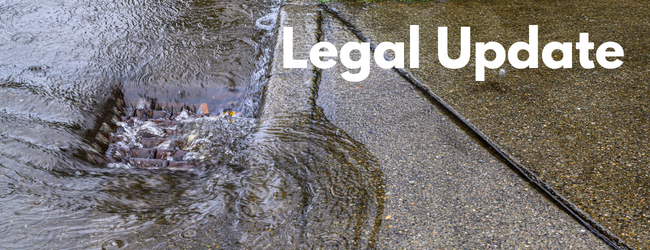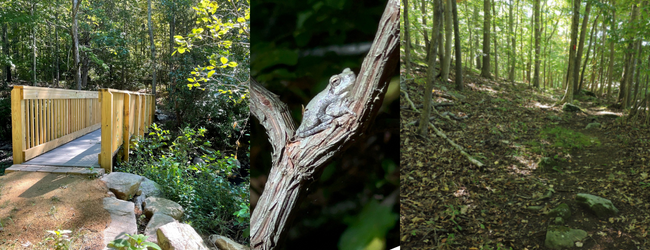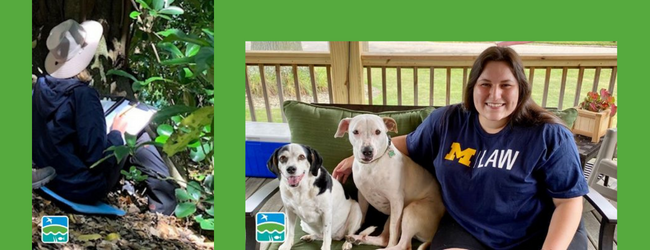Your Weekly Digest of Save the Sound’s Action

Each Wednesday, we bring you an update on one of our program areas. This week: Legal Actions. Read other recent updates on our blog: Healthy Waters, Climate & Resiliency, Ecological Restoration, Protected Lands.
As summers get longer and hotter, it’s more important than ever for people in all neighborhoods to have access to clean water and open space for their basic wellbeing. Healthy, regenerative ecosystems can also help sequester greenhouse gases and lessen climate disruption. Below are some of the actions our legal team has taken this summer to achieve those outcomes in the Long Island Sound region.
A Cleaner and Greener NYC
Action opportunity for clean water TONIGHT!
In an average year, more than 20 billion gallons of raw sewage and stormwater enter New York City surface waters when it rains. As a result of federal litigation Save the Sound brought against EPA (along with our partners Riverkeeper and NRDC), New York State has finally begun a process aiming to accurately classify NYC waters and decide what levels of human and ecological health protections are attainable. After decades of delay on this process, we are skeptical that this will remedy the situation. That’s why it’s important that NY State and City hear loud and clear from the public during this extended process. We want them to know all NYC waters need to be swimmable and fishable unless and until proper analyses are conducted showing what maximum level of protection can be achieved. Public meetings start tonight. Here’s how you can make your voice heard:
The first public information meeting will be held virtually on August 31 at 6:00 p.m. Follow instructions for registering and connecting to the webinar.
The second public information meeting will be held in person:
September 29 at 2:00
p.m.
NYSDEC Region 2 Office
8th Floor Conference Room 834
47-40 21st Street
Long Island City, NY
Green Infrastructure Recommendations
That’s not our only current clean water action in New York City. Along with Riverkeeper and 14 other influential environmental organizations, we sent detailed green infrastructure recommendations to New York City mayor Eric Adams and the Mayor’s Office of Climate and Environmental Justice (MOC-EJ). The recommendations detailed in Building an Equitably Green New York City are intended to shape the mayor’s upcoming AdaptNYC report, which will address both disaster events fueled by climate change, such as Hurricane Ida, and everyday quality of life for all NYC residents. Recommended improvements to NYC’s Green Infrastructure Program are vital to reducing stormwater by nearly 10%.
This isn’t just a nice idea—it’s the law. Meeting the city’s green infrastructure requirements is necessary under the Clean Water Act to restore water quality and address environmental injustice in NYC neighborhoods due to combined sewer overflows and other pollution. An equitable water rate structure based on impervious surface fees will be most effective and will ensure that those creating the problem are incentivized to solve it.
Coming Soon: Cleaner Local Waters in Connecticut
Residents throughout Connecticut are living with unhealthy rivers, lakes, and streams polluted by excess stormwater runoff from municipal storm systems and other sources. When Save the Sound investigated in 2021, we found widespread non-compliance with municipal Clean Water Act stormwater requirements, contributing to unswimmable and unfishable lakes and rivers. Legal fellow Chris Kelly filed federal court actions against four of the worst violators: Middletown, Burlington, Redding, and Ridgefield.
All four cases have been stayed (or paused) to allow us to engage in collaborative discussions with each of the municipalities on how best to address the issues to achieve compliance and clean up local waterways. We hope to have good news about cleaning up these waterways early this coming fall.

Take a Hike Anytime You Like
A great blue heron perched on a log in the middle of a sunny pond or a gray treefrog clinging to the crook of a mountain laurel are among the wildlife you may well spot on Connecticut Water Company’s Killingworth Reservoir Hiking Trail, a one-mile woodland path that crosses the Menunketesuck River. Hiking this trail, one of dozens located on water company lands in Connecticut, is a great way to appreciate the natural world and revive your own commitment to clean water. Now more places like it are on the horizon, thanks to a Memorandum of Agreement reached by Save the Sound with CT Water and SJW as part of their merger proceedings in PURA, which will increase open space and recreational opportunities across their service area in Connecticut.
Protecting undeveloped land is an important tool for protecting our water supply because the land filters stormwater and buffers the rivers and streams that flow into our reservoirs and Long Island Sound. When CT Water and SJW Group began a merger process in 2018, staff attorney Kat Fiedler negotiated commitments from the newly formed entity. Those commitments created new land protections and required CT Water to do a study on expanding passive recreation for the public on other sites. It also secured an extended, three-year process, supplementing a statutory timeline, so that towns and land trusts that might be interested in property purchases would have additional time to exchange information and visit and evaluate sites.
Pursuant to these requirements, CT Water worked with environmental stakeholders and identified seven areas across the state that it will further evaluate for potential partnerships to allow for public recreational use while still protecting the quality of the public drinking water supply and public safety. In the case of the Killingworth trail, there’s room for possible expansion into additional water company property and abutting state land in Cockaponset State Forest.

Thanks to Our Legal Interns!
Save the Sound’s legal interns provide vital research, drafting, and other work that makes all this action possible. Our Environmental Law Clinic operates during the fall and spring semesters through the UConn School of Law. We also continue to develop future environmental lawyers throughout the summer via our summer internship program. All these law students learn by working on actual current and future Save the Sound cases under the supervision of Save the Sound attorneys. This past summer we welcomed Taylor Hopkins, University of Michigan Law School, and Audrey Leighton, St. John’s University School of Law, who worked on matters relating to plastics, clean water, and land protection. We thank them for their great work and wish them the best of luck in their careers!
Thanks for
all you do to support our legal work at Save the Sound.
Roger Reynolds, Senior Legal Counsel
